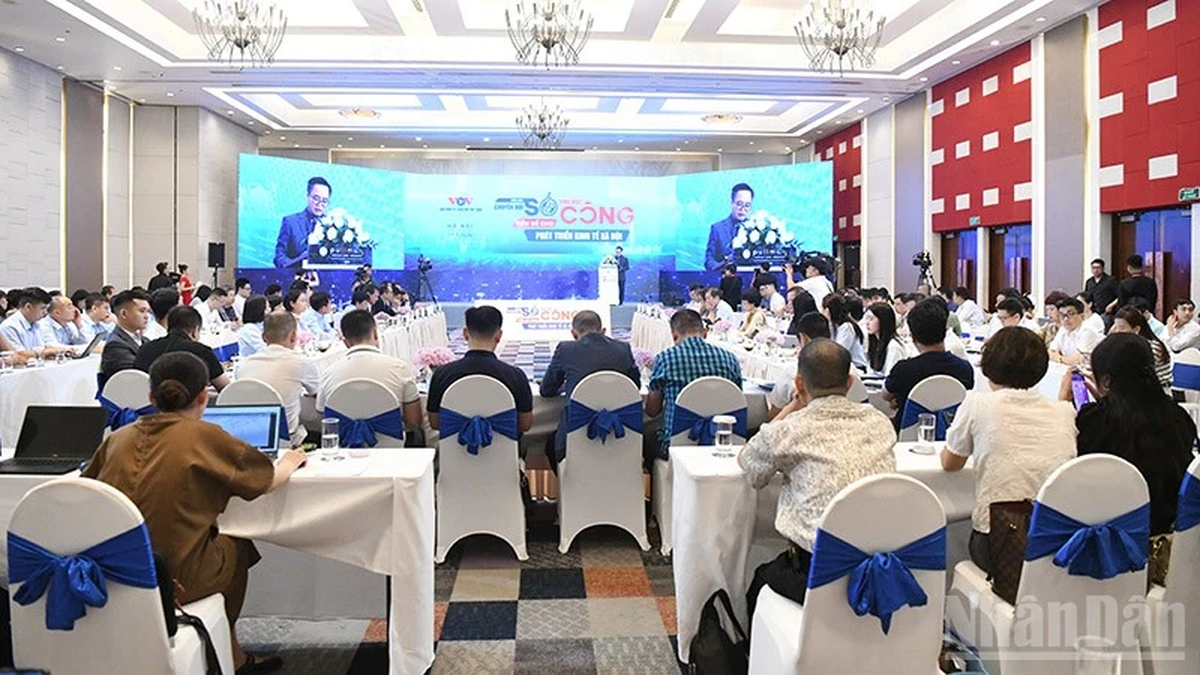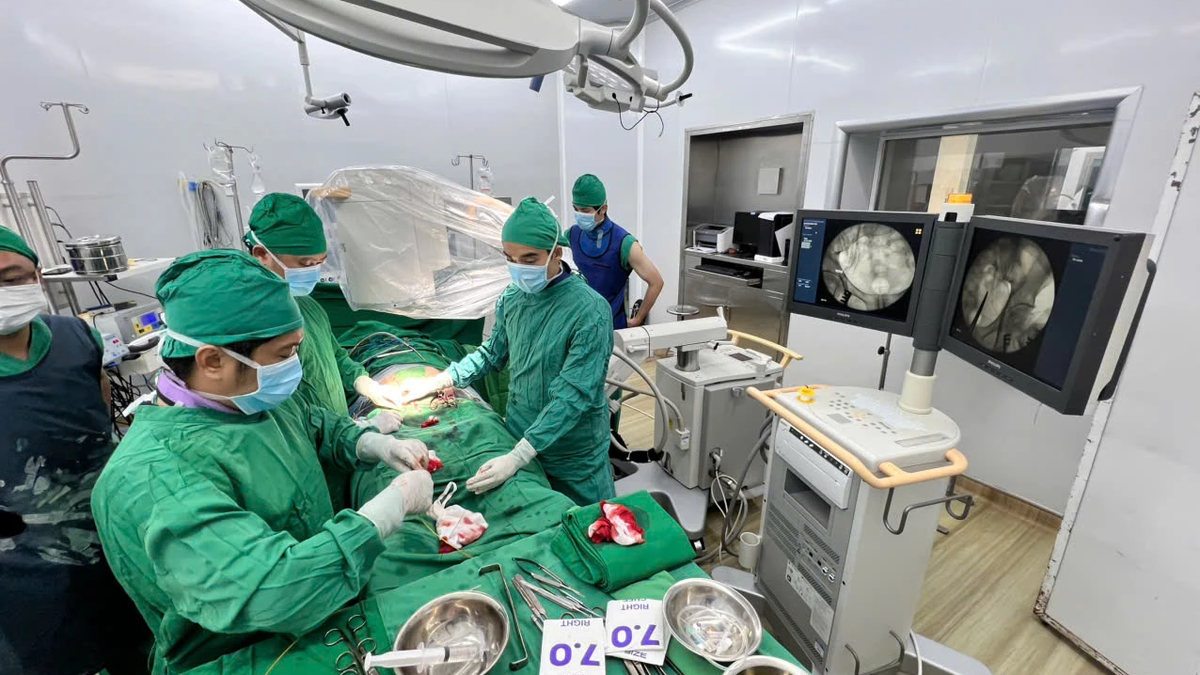This is the region with the highest economic growth rate, the most clearly improved business investment environment, and the most synchronous and modern transport infrastructure among the four key economic zones of the country. In order for the Northern Key Economic Zone to develop rapidly and sustainably, with spillover effects to other regions in the country, in the coming time, in addition to the efforts of localities in the region, it is necessary to have open and favorable mechanisms and policies to effectively resolve issues of regional connectivity.
Lesson 1: Effectiveness from improving investment environment
Promoting the potential and advantages of the region, in recent years, the provinces and cities in the Northern Key Economic Zone have implemented many solutions to improve the investment and business environment, mobilize diverse and effectively use development investment capital. Thanks to that, the competitiveness of the economy has been increasingly enhanced, and the economic structure has shifted in a positive direction.
Investment environment changes dramatically
Decision No. 198/QD-TTg dated January 25, 2014 of the Prime Minister approving the Master Plan for Socio-Economic Development of the Northern Key Economic Zone to 2020, with a vision to 2030, clearly stated: "Building the Northern Key Economic Zone to become one of the leading regions in the country in economic development, a pioneer in implementing strategic breakthroughs, restructuring the economy, innovating the growth model, and implementing industrialization and modernization". In response to practical requirements, localities in the region have identified that improving the investment and business environment, building support mechanisms and policies to mobilize economic sectors to participate in investment, and reducing budget expenditures are key tasks and solutions in recent times.
To support enterprises in a practical and effective manner, localities have strongly reformed administrative procedures. Up to now, Quang Ninh province has shortened the time for granting business establishment certificates to two working days; the time for granting investment certificates for projects not subject to investment policy decisions is no more than 10 days; for projects subject to investment policy decisions, the time for granting investment certificates is no more than three days. The time for handling investment administrative procedures under the authority of the Provincial People's Committee is no more than five days; the time for granting construction permits and related procedures is no more than 45 days. In Hanoi, the rate of administrative procedures implemented under the one-stop, one-stop mechanism reached 97.33%, the total time for appraising construction designs related to licensing and granting construction permits was reduced by 29 days. The time for handling land use right certificates was reduced by 10 days. In Bac Ninh province, the provincial public administration center has mapped and digitized the process of handling nearly 1,700 administrative procedures according to ISO 9001-2015 standards. Agencies and offices with administrative procedures performed at the center all comply with the "four on-site" regulations (including: receiving, appraising, approving and returning results), ensuring that administrative procedures are handled quickly and conveniently. Vinh Phuc province has shortened the time for establishing a business from three days to 1.5 working days, reducing from 30 to 35% of the time for administrative procedures for public investment projects; reducing 30% of the time for handling direct investment projects, 100% of FDI project procedures are handled via the internet, to avoid negative consequences...
Along with administrative reform, local authorities have proactively established communication channels, listened to opinions from businesses, and created closeness and friendliness between the government and investors. Every month, provincial and municipal leaders, along with relevant sectors and districts, organize meetings and dialogues with businesses, regularly inspect works and projects, urge progress, and promptly remove and resolve problems during implementation. The "on-site investment promotion" model of Quang Ninh province and the "business doctor" model of Bac Ninh province can be mentioned, bringing practical and clear benefits to people and businesses. Most of the key projects and works have basically met the progress requirements. Two years ago, Cat Hai island district (Hai Phong) implemented many large investment projects of domestic and foreign investors, with a land use scale of up to 1,500 hectares, requiring land recovery from nearly 1,000 organizations, households and individuals. At first, the work encountered numerous difficulties. City leaders, along with local Party committees and authorities, continuously held meetings to urge progress; conducted field inspections, resolved on-site problems; organized direct dialogues with people who had petitions to find a common voice... The enthusiastic participation and high responsibility of authorities at all levels has accelerated the progress of site clearance for projects, contributing to the "lightning-fast" birth of Vinfast Automobile Factory; the Cat Hai - Phu Long three-wire cable car route across the sea of Sun Group, bringing great opportunities for economic development of this potential island district. Appreciating the positive moves that Quang Ninh province has made to support businesses, Deputy General Director of Bumjin Electronic Co., Ltd. (Korea) Li-bum-xich (Lee Bum Sik) said: "We invested in the Audio Equipment Factory project located in Dong Mai Industrial Park, Quang Yen town. Thanks to the active support in all aspects from the People's Committee of Quang Ninh province, departments, branches, Economic Zone Management Board..., although the factory construction process took place right during the Covid-19 pandemic, the project was granted an investment certificate in the fastest time, creating conditions for the project to come into operation soon".
The positive changes in improving the investment environment of localities have been highly appreciated by the domestic and foreign business community. The results of the Provincial Competitiveness Index (PCI) ranking in 2019 announced by the Vietnam Chamber of Commerce and Industry (VCCI) on May 5 showed that the PCI index in 2019 of seven provinces and cities in the region all increased in points compared to 2018. Of which, Quang Ninh province excellently held the leading position; Bac Ninh province increased 11 places, ranked fourth; Hanoi and Hai Phong cities were both in the top ten localities with good governance quality. Vinh Phuc province ranked 17th, with the highest market entry index among 63 provinces and cities. The PCI index of Hai Duong and Hung Yen provinces increased from three to eight places compared to 2018. On the morning of May 19, the results of the 2019 Public Administration Reform Index (PAR INDEX) and the Satisfaction Index of People and Organizations with State Administrative Services (SIPAS) were announced by the Government, continuing to bring good news to localities in the region. In particular, Quang Ninh province ranked first in both rankings, Hanoi ranked second in the PAR INDEX, Hai Phong ranked first in the SIPAS index and fourth in the PAR INDEX.
Unlocking Resources
The attractive business investment environment has opened up and mobilized large resources in society to develop the region's socio-economy. In Hanoi, from 2016 to present, there have been more than 107,000 new enterprises, with registered capital of up to 1 million 340 trillion VND, 1.36 times higher than the period 2011-2015. The total social investment capital mobilized in the period 2016-2019 reached 1 million 308 trillion VND, an average increase of more than 11%/year. Of which, the proportion of state investment capital gradually decreased, accounting for 39.3% of total investment capital; investment from the domestic private sector increased accordingly, reaching 51.1%. Foreign direct investment (FDI) attraction of the city in the past four years reached 23.702 billion USD, 3.97 times higher than in the 2011-2015 period, making Hanoi the country's leader in this field in the last two years. Similarly, Hai Phong's total social investment capital in this period reached 587 trillion VND, four times higher than in the 2011-2015 period. Of which, socialized investment capital accounted for 92.4%, while budget capital accounted for only 7.6%. In 2019, Bac Ninh province had 2,403 newly established enterprises, with a total registered capital of 22 trillion VND. The number of newly licensed FDI projects in 2019 in Hai Duong increased by more than 35.5% in the number of projects and more than 60% in investment capital compared to 2018, reaching 829.6 million USD. Also in 2019, Hung Yen province received 116 investment projects, with a total registered investment capital of more than 6,000 billion VND and 378 million USD...
Abundant investment resources are an important premise for localities to invest in building and developing transport infrastructure in a synchronous and modern direction. In the past 5 years, with capital sources, Hai Phong has built 45 bridges, with a total investment of more than 30 trillion VND, including many large projects, meeting the development needs of the region. Chairman of Hai Phong City People's Committee Nguyen Van Tung said that in January 2019, the Politburo issued Resolution No. 45-NQ/TW on building and developing Hai Phong City until 2030, with a vision to 2045. In which, it is determined that "Hai Phong is the driving force for development of the Northern region and the whole country". Just two days after the Politburo issued the Resolution, the Standing Committee of the Hai Phong City Party Committee worked with the Standing Committee of the Thai Binh Provincial Party Committee; then worked with the Standing Committee of the Hai Duong Provincial Party Committee and the Standing Committee of the Quang Ninh Provincial Party Committee. Localities gathered to discuss and agree to build five bridges across the river to connect Hai Phong with neighboring localities with a total cost of nearly 5,000 billion VND. Of which, Hai Phong invested in building bridges and access roads to the bridges, while localities paid for site clearance and renovation of roads connecting to the bridges. At the end of 2019, after just over seven months of construction, the Hoa River Bridge connecting Vinh Bao District (Hai Phong) with Thai Thuy District (Thai Binh) was completed and put into use. In mid-May 2020, the city continued to start construction of Quang Thanh Bridge across Van Uc River, connecting An Lao District (Hai Phong) with Thanh Ha District (Hai Duong) and Dinh Bridge across Kinh Thay River, connecting Thuy Nguyen District (Hai Phong) with Kinh Mon Town (Hai Duong). It is expected that in early 2021, Hai Phong will continue to start construction of Lai Xuan Bridge and Ben Rung Bridge connecting with Quang Ninh Province. In recent years, Hanoi has coordinated with ministries and branches to invest in developing transport infrastructure. A number of projects connecting localities in the region have been completed, such as the Hanoi - Hai Phong expressway, the Hanoi - Hung Yen route (connecting Ecopark urban area with Ring Road 3)... The city is implementing Ring Road 4 and Ring Road 5 connecting with Vinh Phuc and Hung Yen provinces, speeding up the investment project to complete the construction of the intersection of Ring Road 3 with the Hanoi - Hai Phong expressway, striving to complete the project in October 2020.
Up to now, Quang Ninh is the leading locality in the country in mobilizing non-budgetary resources to invest in infrastructure. In the past 5 years, the investment capital in the form of PPP for transport works alone has reached more than 47 trillion VND. Of which, the State capital participation is about 9% for site clearance and investment in counterpart works. This not only demonstrates the great determination of the province, but also shows the growing attachment and trust between the province and investors. Since 2018, Quang Ninh has officially put into operation two expressways developed by the private sector with a total length of nearly 100 km, including Bach Dang bridge on the Hai Phong - Ha Long route constructed with the latest technology in Vietnam with a total investment of nearly 7,500 billion VND; Ha Long - Van Don expressway is nearly 60 km long with a total investment of 12 trillion VND. At the same time, the first private airport in Vietnam in Van Don and the first cruise port in Vietnam in Ha Long City were completed. Provincial roads leading to border gates, borders, economic zones and industrial parks were also quickly upgraded and completed, creating favorable connections for socio-economic development between localities and international markets.
Synchronous and modern transport infrastructure creates favorable conditions for localities in the region to develop socio-economy, promoting economic restructuring towards industrialization and modernization. In addition to the three key areas: Hanoi, Hai Phong and Quang Ninh, which are always in the group of five provinces and cities with the largest budget revenue in the country, the remaining localities also have many breakthroughs, achieving higher growth rates than the national average. Although Bac Ninh province has the smallest area in the country, its total product (GRDP) in 2019 reached 157,300 billion VND, ranking seventh in the country, with an average income per capita of 6,163 USD, 2.23 times higher than the national average and ranking second in the country. When Vinh Phuc province was re-established (in 1997), its budget revenue was only 100 billion VND, with an average income of 2 million VND/person, and the whole province had only one industrial park. Thanks to industrial development as a driving force for development, the budget revenue has so far reached 35 trillion VND, with average income per capita reaching 119.3 million VND/year. In 2019, Hung Yen province's economic growth rate reached 9.72%. The economic structure continues to shift in a positive direction: Industry - construction accounts for 62.15%; trade - services 29.41%; agriculture 8.44%. Gross domestic product per capita reached 74.57 million VND/year. The economic scale of Hai Duong province in 2019 increased 1.6 times compared to 2015, GRDP reached 127,871 billion VND, average income per capita reached 74.4 million VND. Since 2017, all seven provinces and cities in the region have adjusted their budgets to the central government. Economic development not only helps localities contribute positively to the national budget, but also ensures social security for the people. Up to now, the Northern Key Economic Zone is the leading region in the country in terms of the number of communes and new rural districts, and is the region with the lowest poverty rate in the country, exceeding the target set in Decision No. 198/QD-TTg.
(To be continued)
Source: https://nhandan.vn/phat-trien-vung-kinh-te-trong-diem-bac-bo-post458852.html




































































































Comment (0)